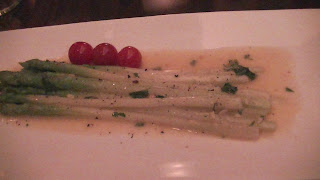Chef Maitreya Sen, Chef de Cuisine at La Cucina, Hyatt Regency, Kolkata
“Let me first say one thing,” says Chef Maitreya Sen when we meet him in La Cucina, Hyatt Regency’s authentic Italian restaurant: “I am not an Italian but I have a passion to cook Italian food.”
It may sound like a paradox – an Indian chef surrounded by
influences of the great cuisine of Bengal who falls in love with the joyous
tastes and flavours of Italy ,
but it’s evident that Italian food has become a part of Chef Sen’s heart and
soul.
Maitreya gained his first experience of Italian gastronomy in
hotels, including 16 years at the upmarket Taj, when he often found himself
working alongside Italian colleagues.
“I gained almost all my knowledge from them and that was
what gave me the passion for this type of cuisine,” he tells us. “From when I
first started cooking at a junior level I always had a dream to, if possible,
become an Italian chef and I’m happy to say I turned my dream into a reality. I
feel that Italian cooking is in my blood.”
 |
| Chef Sen and his team at La Cucina |
At the Hyatt Regency where Kolkata born Maitreya has worked
since its opening in 2002, the management could have employed an Italian chef
to oversee their flagship dining destination, La Cucina. Instead they recognised
that they had a unique asset in their incandescent chef. They decided to send
him for a month’s training in the country itself under Michelin-star chef
Davide of Il Sole di Ranco, at his family-run relais in Milan . It turned out to be a wise investment
La Cucina is now the most popular Italian restaurant in town.
“It was a very small property near to Lake
Maggiore – a beautiful place,” remembers Chef Sen of Il Sole. “The
restaurant had a 60 years’ heritage, starting as a hotel in 1957, and the
kitchen had never changed since then with big hotplates and old stoves. But the
experience was something I shall cherish all my life.
“Chef Davide was very welcoming and kind. The biggest
problem is that he rarely speaks English and doesn’t understand that much and I
have tried to learn Italian but I don’t have much time. As you can imagine we
had a lot of fun – I used to ask him ‘Chef, what is this?’ He would look at me,
say something in Italian and then I would look at him! Luckily the waiter,
Fabio knew a lot of English and used to interpret for us. But I learned so much.
After that experience I shifted to Milan
where the hotel supplier moved me round speciality restaurants – Tuscan,
Sicilian - all kinds. The chefs in each were really happy to show me around
their kitchens and how they cooked various dishes. It was the first time anyone
had travelled from this part of the world to learn about their cooking. I also
visited all the markets in Milan :
fish and vegetable markets and cheese and wine shops so I gained a complete
picture of the Italian food.”
On his return to the Hyatt, Maitreya was able to make new
changes to the menu to reflect the truly authentic north Italian cooking. The
flavours and ingredients are simple yet the results are a revelation to the
taste buds. One of the most important innovations was to introduce homemade
pasta. “I learned from Chef Davide that pasta is the most important thing in
Italian food,” says Maitreya. “You get pasta in all restaurants but it is the
kind of commercialised readymade pasta that you could cook at home. I learned
you should go deeper into the traditions of Italian food, to get to the
‘mama’s’ and grandmothers’ style of cooking; the ones who used to make the
fettucinne, the gnocci, the pasta and the dumplings in the traditional kitchen.
So I am still implementing this – I have a small machine to make all types of
pasta: the capeli d’angelo, fusilli, fettucine, angelo, ravioli and so on, and it
tastes completely different from the dried variety.”
 With homemade pasta, a wood fired stove for fresh pizzas, risottos,
dolcis, Italian aperitivos and wines, La Cucina has become a corner of
With homemade pasta, a wood fired stove for fresh pizzas, risottos,
dolcis, Italian aperitivos and wines, La Cucina has become a corner of
The married father of one 12-year-old daughter, Maitreya now
has another dream – to travel back to Italy at least two or three more
times in his life. And when he does he hopes to take his family with him: “My
daughter has also grown a palate for this type of food,” he says with a smile.
It’s not surprising!







.jpg)










































